Lazer launches 6 helmets with new rotational protection system
KinetiCore creates crumples zones around your head
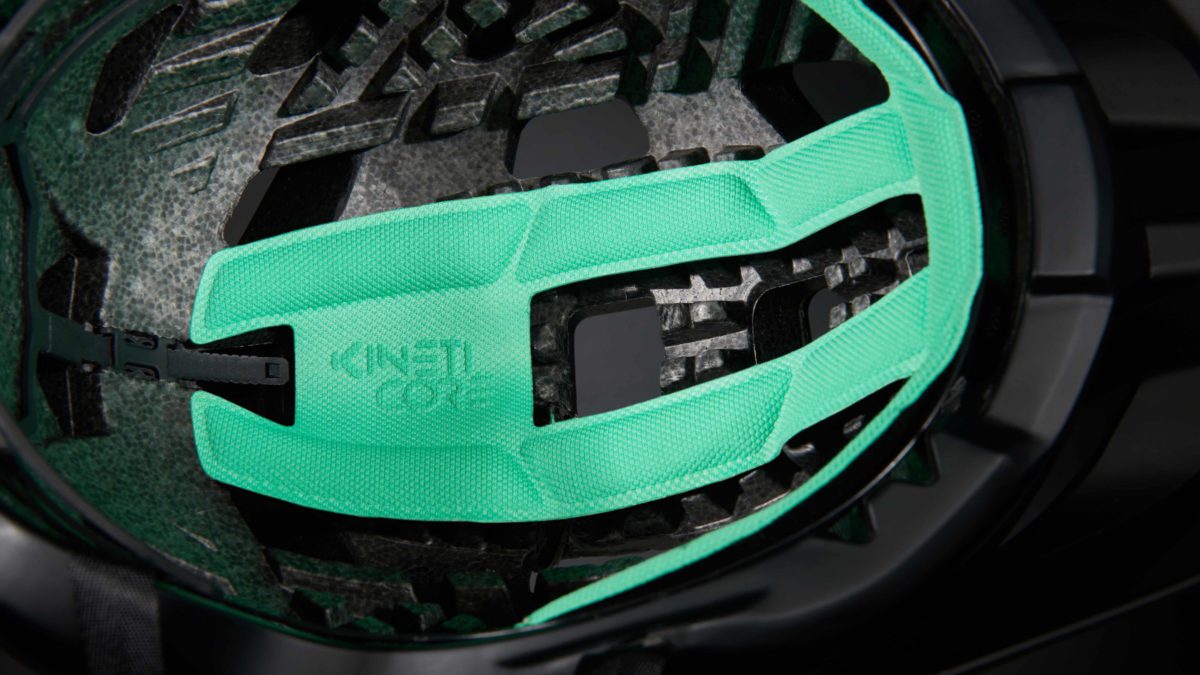
Helmet maker Lazer has released six new helmets that all use new technology that increases the protection for your head. That tech is called KinetiCore. Like systems such as MIPS, Trek’s WaveCel and Smith’s Koroyd, KinetiCore is designed to address harmful rotational forces that can affect your brain in a crash.
The six helmet models that now have KinetiCore are the Vento (aero road), Strada (road), Jackal (trail), CityZen (urban), Nutz (kids) and Pnut (toddler).
Not all hits are equal
Helmets without KinetiCore, MIPS or WaveCel can only really manage one type of impact: a linear or direct one. If the helmet takes a direct blow, its shell—made of polycarbonate plastic and expanded polystyrene foam (EPS)—can dissipate the energy of the hit, usually by compressing. That compression reduces the potential harm of the force.
What the traditional helmet can’t really handle are rotational forces, blows that come at oblique angles. A rotational force can cause the helmet to slip and even cause serious damage within a rider’s skull. “What can happen during that rotation,” says Christopher Smith, marketing manager for Lazer, “is the potential for rotational brain injury, commonly known as concussion. It’s a catch-all term for this type of brain injury, but it can really consist of different types of injuries. The brain can experience a significant force, which might cause stretching or tearing in the outer blood vessels.” Since the brain sits within fluid inside the skull, a rapid rotation of the head could cause the brain to impact the interior of the skull, causing another type of injury. If there’s any bleeding within the skull, that can put a lot of pressure on the brain.
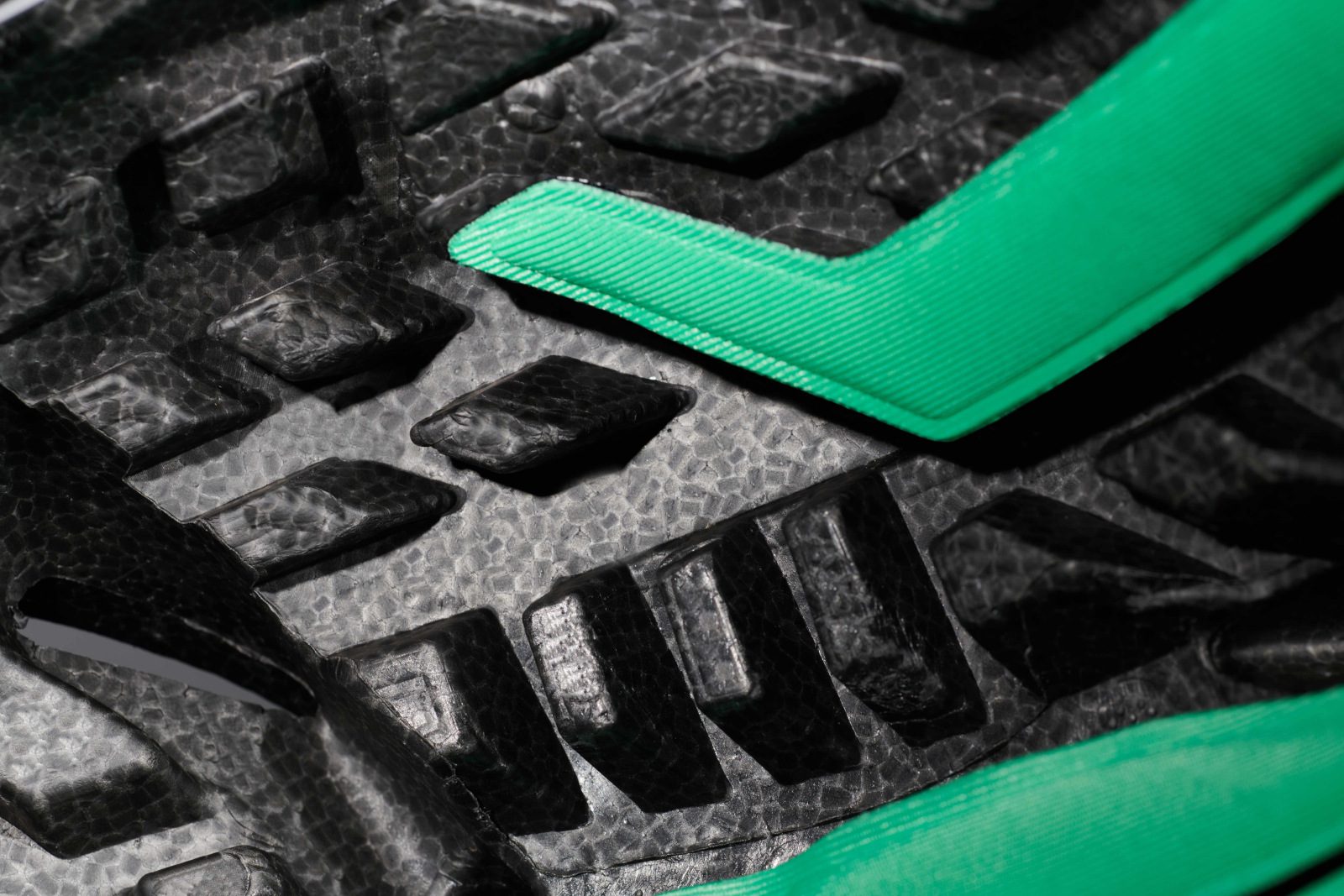
To help to mitigate the effects of rotational forces, a helmet needs a system such as MIPS, WaveCel or Koroyd. Lazer was the first bicycle helmet company to put MIPS in an in-mould helmet. In 2012, it was also the first to include MIPS in children’s helmets.
The development of KinetiCore
About five years ago, Lazer started working on its own rotational protection system. While existing systems do provide a high degree of protection, the company had identified a few drawbacks to existing systems. Generally, a rotational protection system requires more material to be added to a helmet, whether that’s MIPS’s liner or WaveCel’s or Koroyd’s cell-structured plastic, which is meant to crumple. Smith argues that these systems hinder airflow and ventilation within a helmet. He also says that these systems can increase discomfort. The anchor points for some of these systems can catch on your hair and tug out a few strands on occasion.
“Those protection technologies require more materials,” Smith says. “So you’re adding more plastics into production, which means your adding more plastics into the environment.”
The systems can come with increased cost, which a manufacturer has to recoup from customers.
To address these issues, and to provide riders with protection against rotational forces, Lazer created KinetiCore.
How KinetiCore works
A KinetiCore helmet, such as the Vento, features a series of EPS foam blocks within the helmet. They are simply made of the same material as the bulk of the helmet and moulded into the helmet during the manufacturing process. The blocks extend down toward your head. They are tallest around the top of your head and get progressively lower to the sides, as well as toward the front and back. Some resemble the knobs on a mountain bike tire.
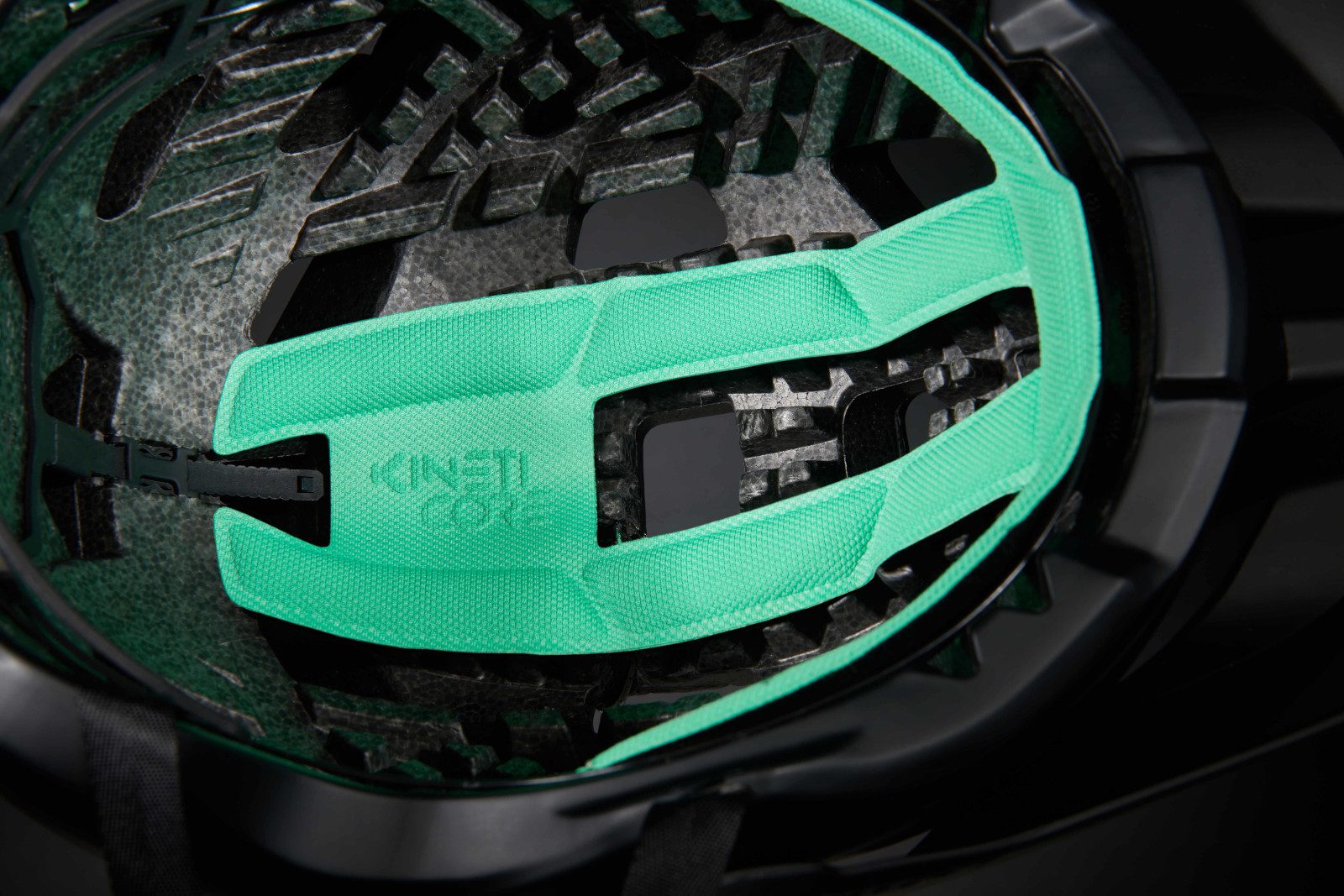
Smith says these blocks are like the crumple zones on a car, which are designed to absorb the energy of a crash as they break. In the case of a car, the crumple zones work to keep the energy away from a passenger. With KinetiCore, the blocks compress or break, absorbing the forces of an impact in an effort to keep them from reaching a rider’s head.
Lazer has had its new KinetiCore helmets tested by Virginia Tech, which has a facility and system for rating helmets. Five stars is the highest rating a helmet can get. Four stars is considered very good. Virginia Tech recommends any helmet with four or five stars. The Vento, Strada and Jackal have received five-star ratings. The CityZen has four. Virginia Tech only has the ability to test medium-size helmets, so it doesn’t rate kids’ helmets currently.
The advantages of KinetiCore
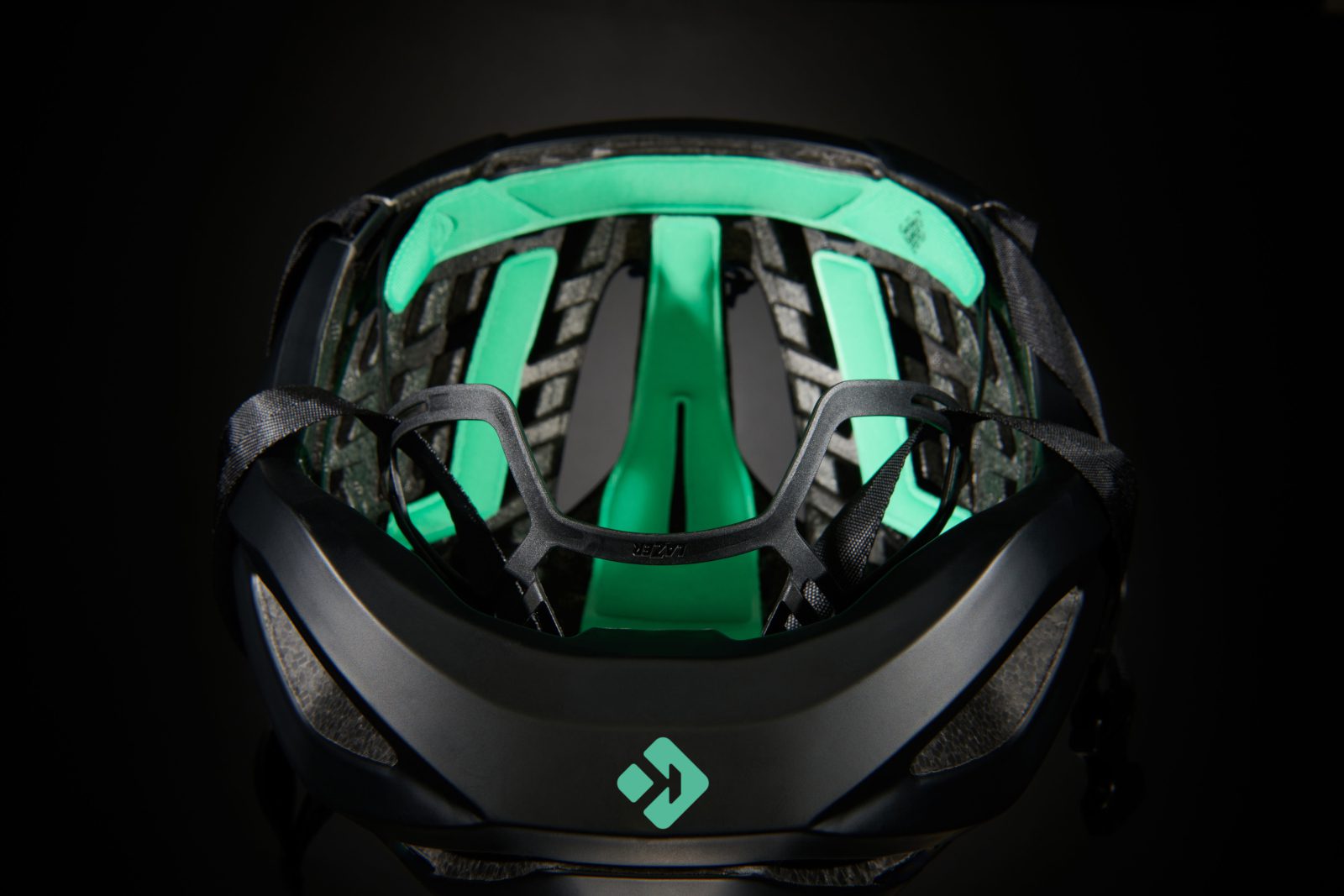
KinetiCore is lighter than other systems as it does not require any additional material within helmet. “Not only are we not adding an additional protection system to the helmet,” Smith says, “we’re actually accomplishing our goal by removing material from the helmet. The blocks and channelling of KinetiCore require less EPS foam during construction and that ultimately delivers a lighter weight helmet.” Lazer did look at using a foam of a different density for KinetiCore. A lower density foam might have allowed the company to lower the weight of a helmet, but the crumple zone wouldn’t have been as effective. Currently, it’s all the same EPS within a helmet. The height, size and shape of the KinetiCore blocks tune the helmet’s behaviour in a crash.
Smith says KinetiCore doesn’t obstruct airflow, so the company’s new helmets have excellent ventilation. The new lids also use less plastic, in some cases as much as 24 per cent less.
First look: Vento KinetiCore helmet
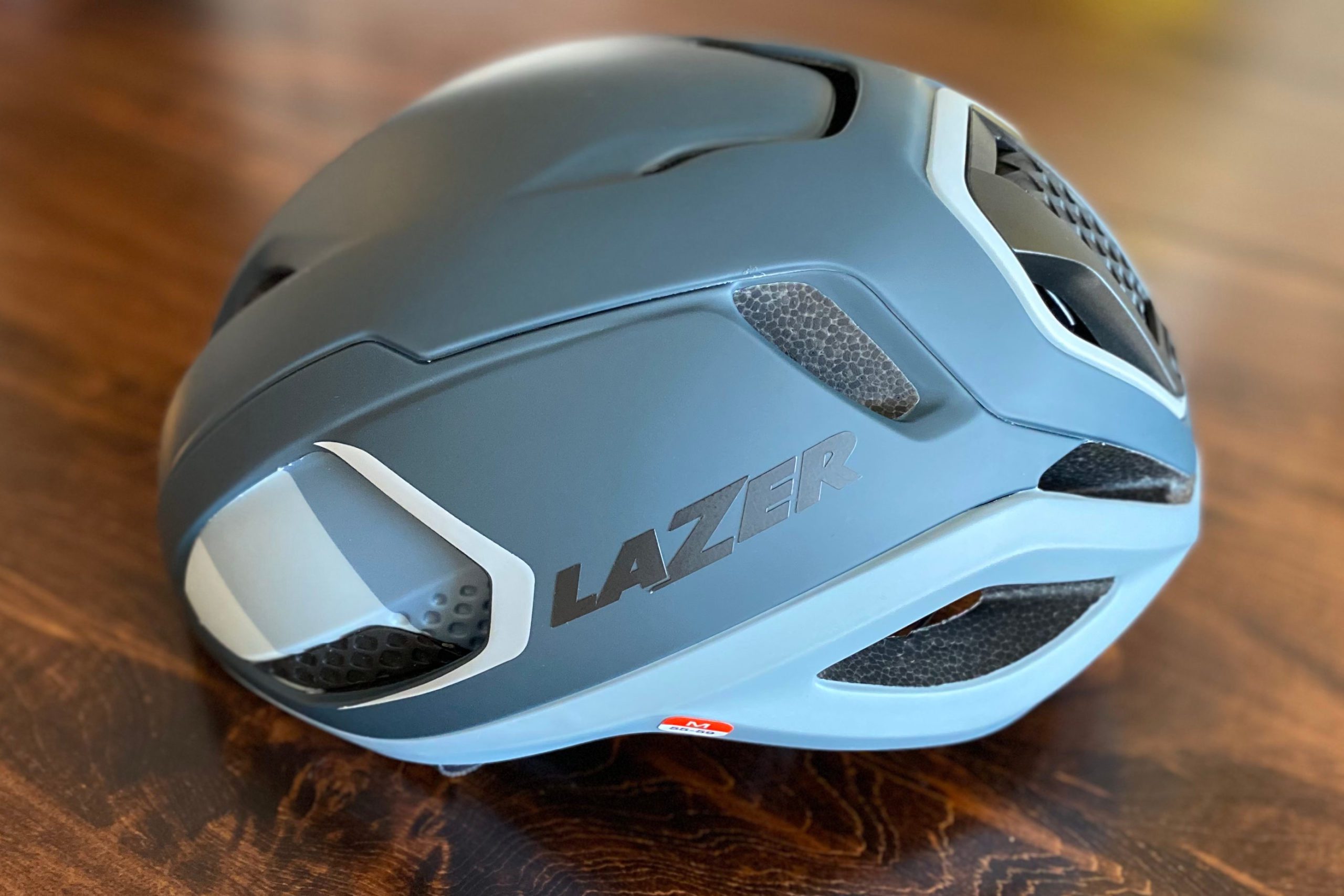
The new Vento KinetiCore helmet is more aerodynamic than Lazer’s Bullet 2.0 MIPS, by 2.3 per cent. At 290 g, it’s more than 29 per cent lighter than the existing aero lid. Lazer says the Vento’s cooling abilities are 5.4 per cent better. A medium size Vento uses less plastic, about 90 g worth, than the Bullet 2.0 MIPS.
The Vento uses a new retention system. On some of Lazer’s existing helmets, there’s RollSys, which features a dial at the top back of the helmet. By rotating the dial, you can snug up a helmet around your head. The new ScrollSys retention system uses a roller pad, which is like a small treadmill at the back of the Vento. Its smooth action secures the helmet comfortably and securely.
Just below the ScrollSys pad is a notch that can accommodate Lazer’s 40-lumen Universal LED light. It quite elegantly twists into place right at the back of the helmet. The light has five light modes, as well as daylight and movement sensors. It’s charged via a USB cable and has 20 hours of battery life when used in its blinking mode. If you don’t have a KinetiCore helmet, you can still affix the Universal LED light with its accessory strap.
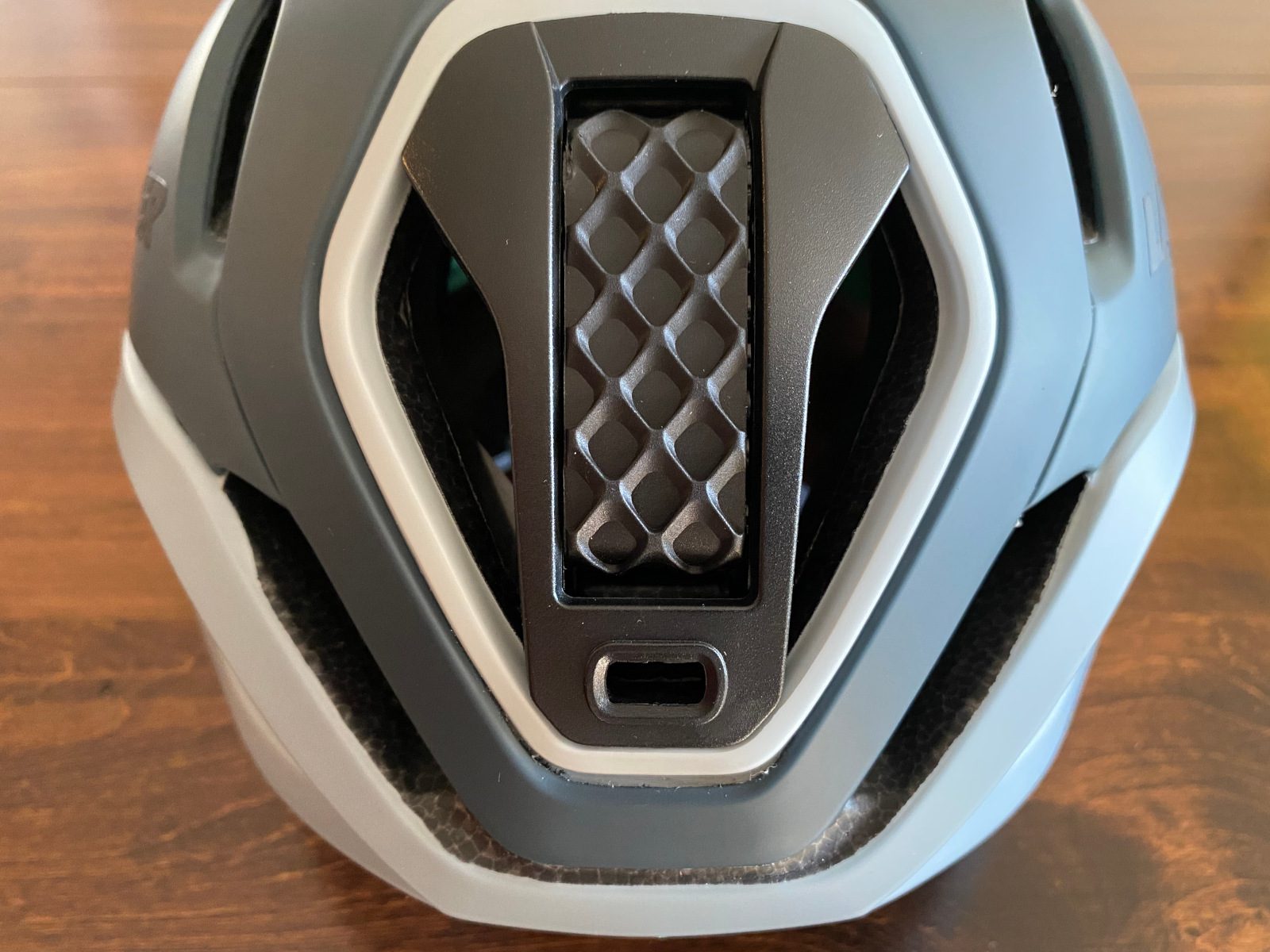
Strada KinetiCore helmet

The Strada is a road helmet that offers more ventilation than the Vento and comes in at a lower price point. The Strada is 1.3 per cent more aero than Lazer’s Blade+ MIPS, as well as six per cent lighter and one per cent better at keeping your head cool. Like the Vento, the Strada weighs 290 g. Also like the Vento, the Strada uses the ScrollSys retention system, comes with built-in eyewear docking and has a direct mount for the Universal light. To boost the aerodynamics of the Strada, you can add the Aeroshell cover.
Jackal KinetiCore helmet

The new Jackal with KinetiCore will replace the mountain bike helmet of the same name outfitted with MIPS. The new one drops 50 g, to weigh in at 340 g. Most of that weight drop is thanks to the plastic reduction allowed by the KinetiCore system. Lazer says air moves five per cent better throughout the new Jackal. Unlike the road lids, the Jackal uses the TurnSys retention system, which has a dial at the back of the helmet. It also has a magnetic buckle and accessory mount, allowing you to attach a light or action camera. The mount has been designed so that’s not an intrusion hazard during a crash. The helmet retains its Virginia Tech five-star rating even if you are running a camera as you tear down a trail.


CityZen KinetiCore helmet

The CityZen is for the commuter. Smith says that the durable ABS shell on the CityZen helmet actually makes it a bit more difficult to get a five-star rating from Virginia Tech, hence the four for this helmet. To boost the CityZen’s level of protection, Lazer has actually doubled up the KinetiCore inside. Like all the KinetiCore lids, there are blocks and channels next to your head. On the CityZen, there are also KinetiCore blocks just beneath the ABS shell. Like the Jackal, the CityZen has the TurnSys retention system. Like the Vento and Strada, the commuter lid has a direct mount for the Universal LED light. If you want to lock the CityZen up with your bike, you can. There’s a reinforced U-lock hole at the back.
Nutz and Pnut KinetiCore helmets
Not that kids are ever weight weenies, but the Nutz KinetiCore and Pnut KinetiCore lose some weight compared with their predecessors. At 250 g, the Nutz KinetiCore is 90 g lighter than the Gekko MIPS. The Pnut KinetiCore is 240 g, 90 g lighter than the Lil’ Gekko MIPS. The helmets have the same form. The flat back is especially a bonus with the Pnut. Little riders wearing the smaller Pnut lid won’t have their heads pushed forward when they are in trailers or baby seats, keeping them more comfortable. Each helmet has the EZ Fit retention system. It’s made up of a belt and spring, which essentially creates an automatic adjustment. Your child can put on the helmet, engage the no-pinch side buckle, and the lid will be nice and snug. An insect net keeps the bugs out. The Nutz has the port for attaching the Universal LED light directly to the helmet.

Canadian pricing of the Lazer KinetiCore helmets and the Universal LED light
| Item | Canadian Price |
|---|---|
| Vento KinetiCore helmet | $400 |
| Strada KinetiCore helmet | $150 |
| Jackal KinetiCore helmet | $285 |
| CityZen KinetiCore helmet | $80 |
| Pnut KinetiCore helmet | $65 |
| Nutz KinetiCore helmet | $65 |
| Universal LED light | $40 |
